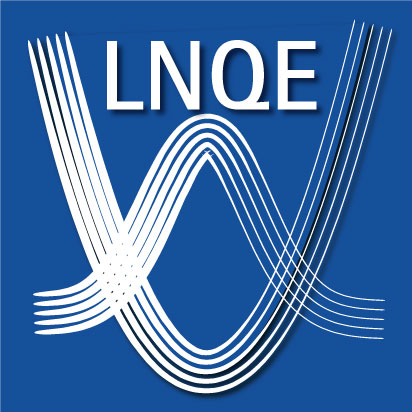Last Saturday at 08:30 CET, a research consortium with significant participation from Leibniz University Hannover successfully launched the sounding rocket MAIUS-2 into space from the European Space and Sounding Rocket Range near Kiruna (Sweden). During the flight, approximately five and a half minutes were available for experiments under zero gravity conditions before the rocket plummeted back to earth as planned. During this time, various experiments were carried out largely autonomously on board the rocket. The launch was preceded by months of meticulous preparations.
On the MAIUS-2 mission, the scientists wanted to create mixtures of quantum gases from two different types of atoms and investigate and control their interactions in zero gravity. To do this, rubidium and potassium atoms were to be cooled to temperatures of up to a few hundred nanokelvins, i.e. just before the theoretical temperature zero. The atoms then assume an extreme quantum state called a Bose-Einstein condensate. The generation of these quantum gases requires a great deal of technological effort, but opens up unique research opportunities. While the generation of rubidium Bose-Einstein condensates could be demonstrated and their behaviour in free fall could be investigated, the Bose-Einstein condensate of potassium atoms did not form as planned. Nevertheless, the MAIUS-2 flight provided many valuable insights that will be analysed in the coming months.
The controlled generation and control of Bose-Einstein condensates is a basic prerequisite for extremely precise measurements of accelerations and forces using so-called atomic interferometers. The researchers hope that the use of this technology in space will lead to a deeper understanding of fundamental natural forces. For example, the universality of free fall is to be put to the test in future with the help of atomic interferometry. But space-based atomic interferometers are also one of the most promising approaches for more precise and high-resolution measurements of the Earth's gravitational field or for the navigation of future space probes. The MAIUS sounding rockets are doing pioneering work and paving the way for the American-German nuclear laboratory Bose Einstein Condensate and Cold Atom Laboratory (BECCAL) to study quantum gases on the International Space Station (ISS).
In 2017, the predecessor mission MAIUS-1 was already regarded as one of the most complex experiments ever flown on a sounding rocket. Back then, the researchers succeeded in creating a Bose-Einstein condensate in space for the first time. Because of the second type of atom, the MAIUS-2 team now had to accommodate twice the number of lasers and the electronics required to operate them in the rocket. A technological challenge - because despite the increased complexity of the payload, the mass and volume of the structure had to be kept more or less constant. Even if not all the experiments went as planned, the launch on Saturday proves that the increasingly miniaturised technology works in principle in space.
The MAIUS-2 mission is being carried out as part of the QUANTUS IV - MAIUS project. This project is led by the Centre of Applied Space Technology and Microgravity (ZARM) at the University of Bremen in collaboration with Leibniz University Hannover, Humboldt University and the Ferdinand-Braun-Institut in Berlin and Johannes Gutenberg University Mainz. The research alliance also includes the DLR Institute of Satellite Geodesy and Inertial Sensing in Hanover, the DLR Institute of Software Technology in Braunschweig, the University of Hamburg and the DLR Mobile Rocket Base (MORABA), which is also carrying out the launch campaign. The project is coordinated and supported by the DLR Space Agency with funding from the Federal Ministry of Economics and Climate Protection (BMWK).
Note to Editors:
For further information, please contact
Prof. Ernst Maria Rasel, Institute of Quantum Optics, Leibniz University Hannover (phone: +49 511 762 19203; email rasel@iqo.uni-hannover.de)












